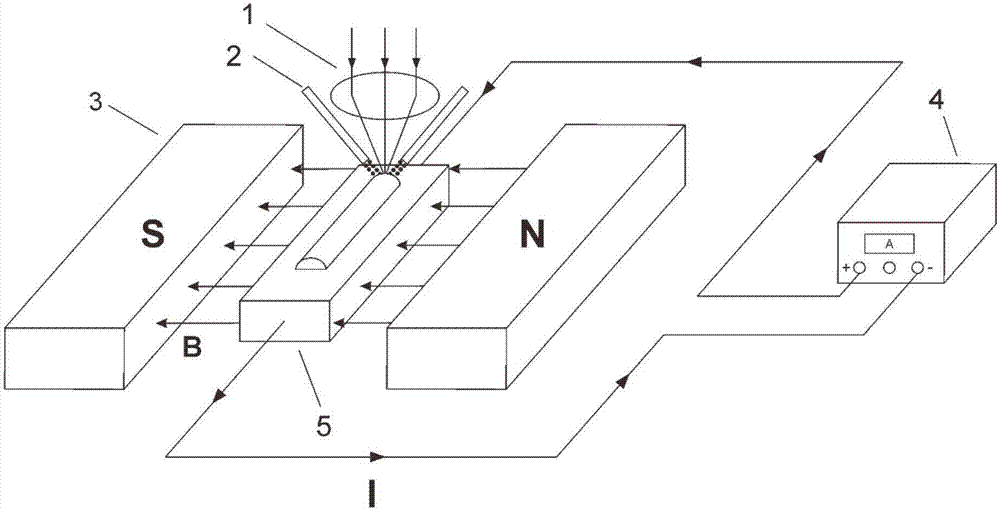Method for reducing pore defect of laser-cladding formed parts
A laser cladding molding and laser cladding technology, applied in the field of additive manufacturing, can solve the problems of difficulty in completely eliminating pore defects and the effect of concentration of gas in the molten pool, achieving a simple and efficient experimental plan and reducing porosity defects. , the effect of good packing speed
- Summary
- Abstract
- Description
- Claims
- Application Information
AI Technical Summary
Problems solved by technology
Method used
Image
Examples
Embodiment Construction
[0032] The specific implementation manners of the present invention will be further described below in conjunction with the accompanying drawings and technical solutions.
[0033] 1) Clean the cladding substrate 5 according to the conventional cleaning method in this field: immerse the cladding substrate 5 in an acetone solution, and clean it with an ultrasonic cleaner at a temperature of 30-40°C for 20-25 minutes, thereby removing the cladding substrate 5 surface dirt; after the cleaning is completed, dry the acetone solution remaining on the surface of the cladding substrate 5 .
[0034] 2) The cladding substrate 5 is placed in the constant magnetic field generator 3 so that it is in a uniformly distributed directional magnetic field environment. After the cladding substrate 5 is placed, fix it with a clamp to avoid position shift under the action of subsequent electromagnetic force.
[0035] 3) Connect the cladding substrate 5 with the positive and negative poles of the DC...
PUM
 Login to view more
Login to view more Abstract
Description
Claims
Application Information
 Login to view more
Login to view more - R&D Engineer
- R&D Manager
- IP Professional
- Industry Leading Data Capabilities
- Powerful AI technology
- Patent DNA Extraction
Browse by: Latest US Patents, China's latest patents, Technical Efficacy Thesaurus, Application Domain, Technology Topic.
© 2024 PatSnap. All rights reserved.Legal|Privacy policy|Modern Slavery Act Transparency Statement|Sitemap



